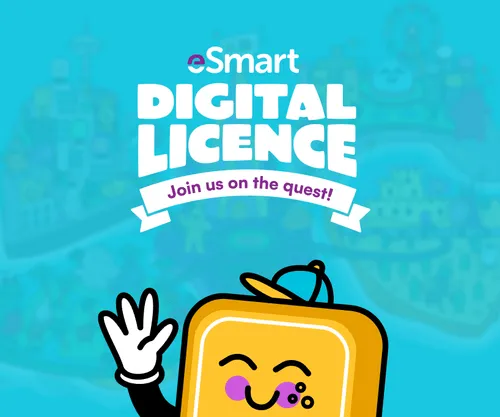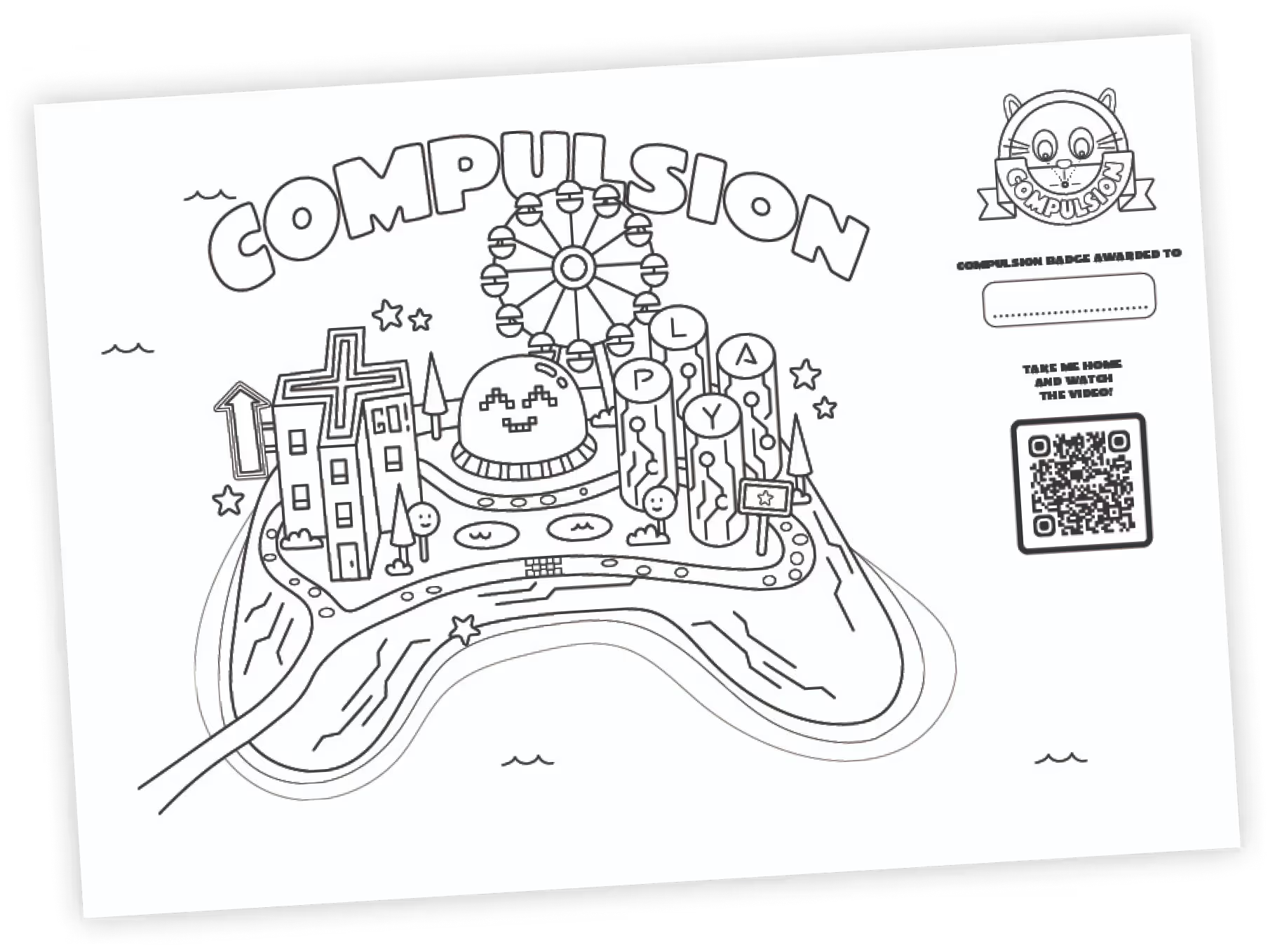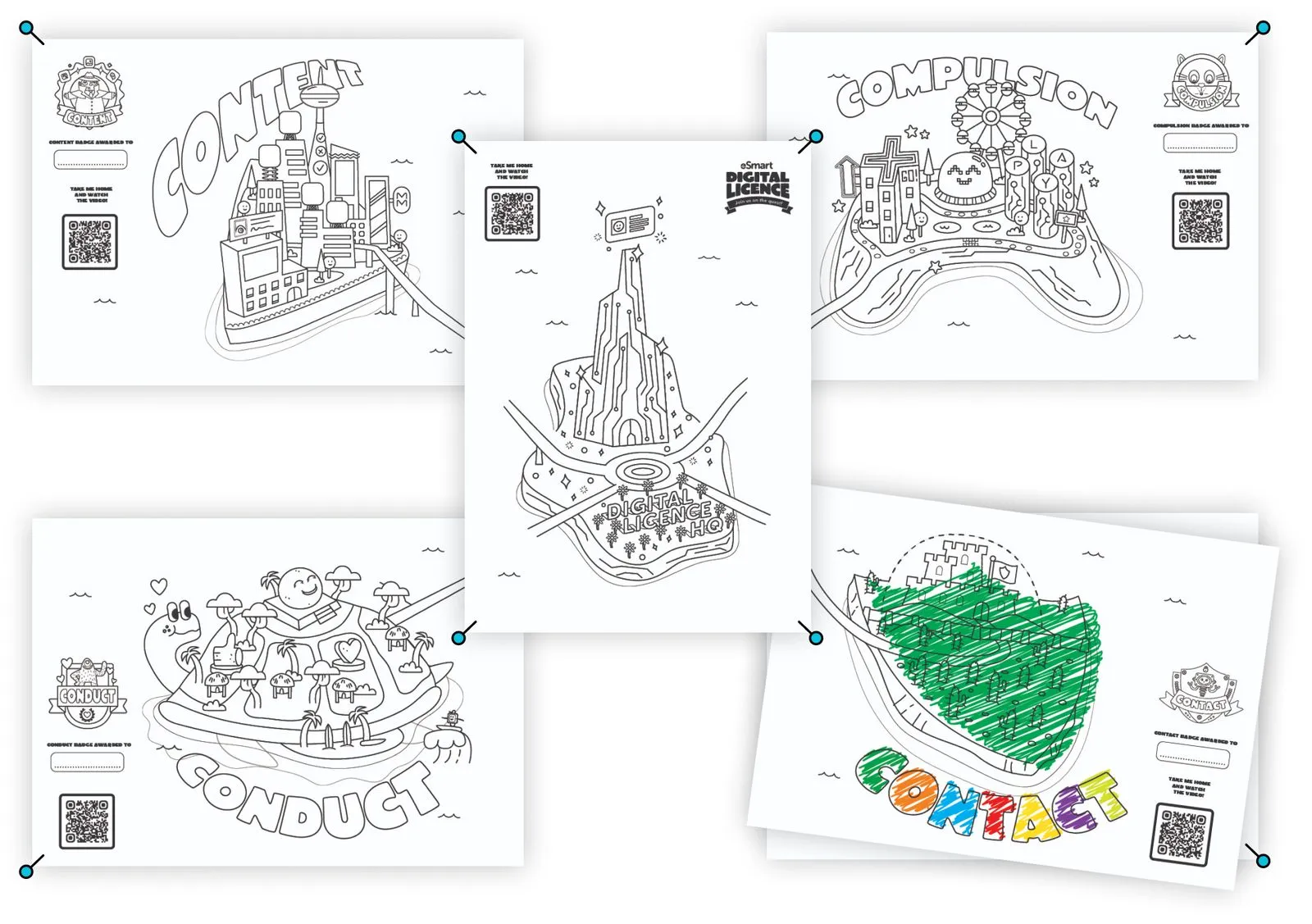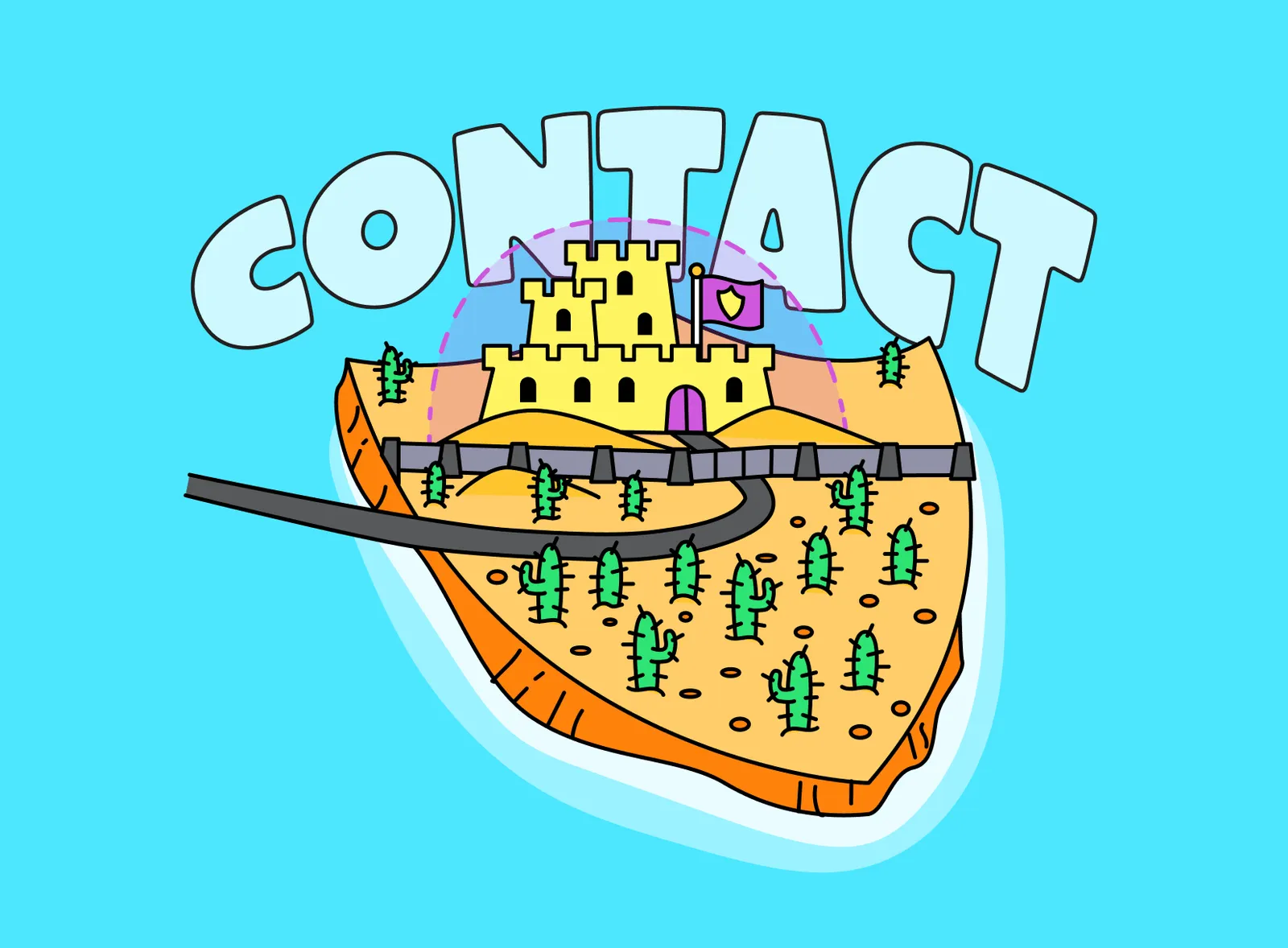eSmart Digital Licence resources
Download the pack

Child Safeguarding Statement
Some resources and activities may prompt a child to remember and potentially share an experience of harm. Make sure you’re familiar with your school's safeguarding policies and procedures so you can confidently report safety and well-being concerns.
Prepare students for the session by discussing: their right to be safe and respected; what to do if discussing online safety makes them feel uncomfortable or unsafe; and how to seek help if they feel or have felt unsafe. Use this resource available on the website.
Risk area
Compulsion
Balancing digital technology use by fostering healthy habits, managing screen time and developing self-regulation skills.

Before you start
Watch video
Explore Compulsion Island
Digi meets Ninja Whiskers, who lives on Compulsion Island. They help explain the importance of finding balance between online and offline activities.
Optional
Discussion starters
Each of the lessons in this risk area contain their own specific framing activities. However, if you feel like your learners need more of an introduction to the subject, try our optional warm-up discussions before stepping into your chosen lesson.
Lower primary prompts (4-6 years old)
“What is fun about playing games on a screen and playing outside. How do you decide on which fun thing to choose from?”
"If you really like a game, is it okay to play it for a long time, or should there be a time to stop? How can you decide when enough is enough?"
"Should you always put down your tablet or phone when someone wants to talk to you, or is it okay to keep playing? What would be a fair choice?"
Middle primary prompts (7-9 years old)
"If you have free time, is it better to spend it playing online games or doing something without a screen? How do you decide?"
"Should there be rules about how much screen time everyone in a family gets, or should everyone decide for themselves? What could happen with each choice?"
"If a friend always wants to play games online and never in person, is that okay? How can you help them find a balance?"
Upper primary prompts (10-12 years old)
"Is it better to use screens for fun only after finishing schoolwork, or should screens be allowed at any time to help with relaxation? What are the benefits and downsides of each approach?"
"Should people be allowed to use their devices as much as they want, or should there be guidelines to help them use screens wisely?"
"If you notice you’re spending more time on screens and less time with friends or family, should you make a change? What could be good or bad about changing or not changing?"
Run lesson
Run your chosen risk area lesson
All lessons are in your resource pack. You can also view each of the Compulsion lesson plans online. Familiarising yourself with the lesson prior to running it in your class is highly recommended.
Printables
Hand out the completion worksheet
Award the learners their risk area island map, which includes the completion badge referenced in the video. Personalise this map in class, or, send this to complete at home.
Visit the materials prep page for more ideas on how to get the most out of the maps.

Printables
Update your classroom wall map
Add one learner’s coloured-in island to your class wall map to track your progress!





